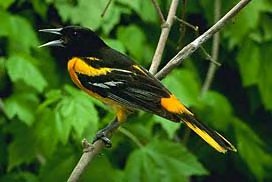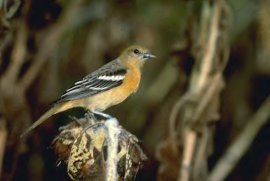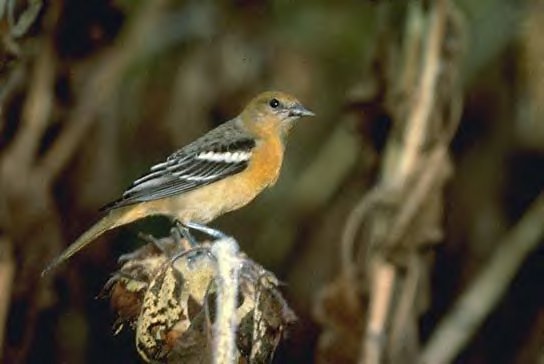Perching Birds
Description
7-8 1/2" (18-22 cm). Male (left) has black head, back, wings, and tail; orange breast, rump, and shoulder patch. Female (below right) olive-brown, with dull yellow-orange underparts and 2 dull white wing bars.
Voice
Clear and flute-like whistled single or double notes in short, distinct phrases with much individual variation.
Habitat
Deciduous woodlands and shade trees. Before the tree's decline, the American elm was a favorite nesting site for the eastern bird.
Nesting
4-6 grayish eggs, spotted and scrawled with dark brown and black. Nest a well-woven pendant bag of plant fibers, bark, and string, suspended from the tip of a branch.
DiscussionRecently the Baltimore Oriole was combined with the western Bullock's Oriole as a single species, the Northern Oriole. When trees were planted on the Great Plains, the two forms extended their ranges and met. Despite the differences in their appearance, it was found that they interbred, and that most birds in the central plains were hybrids, so the birds were combined into a single species. Now, it seems that in some places the birds are choosing mates of their own type, and they are considered separate species again.



